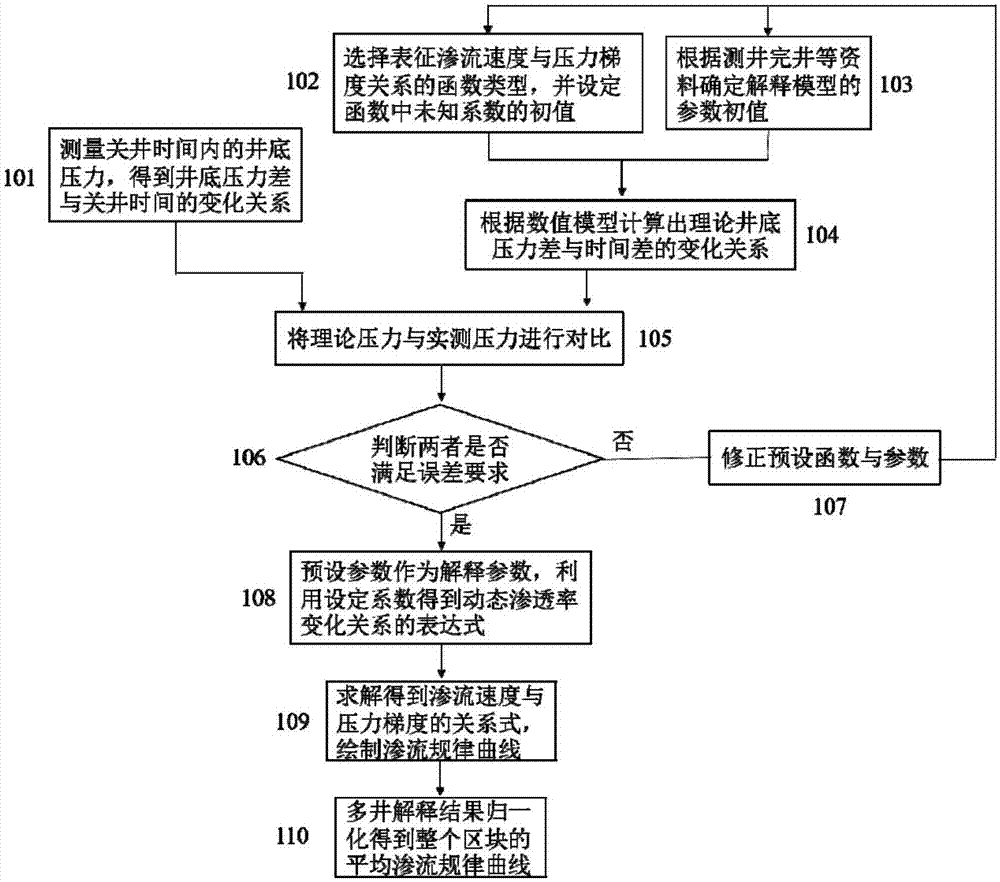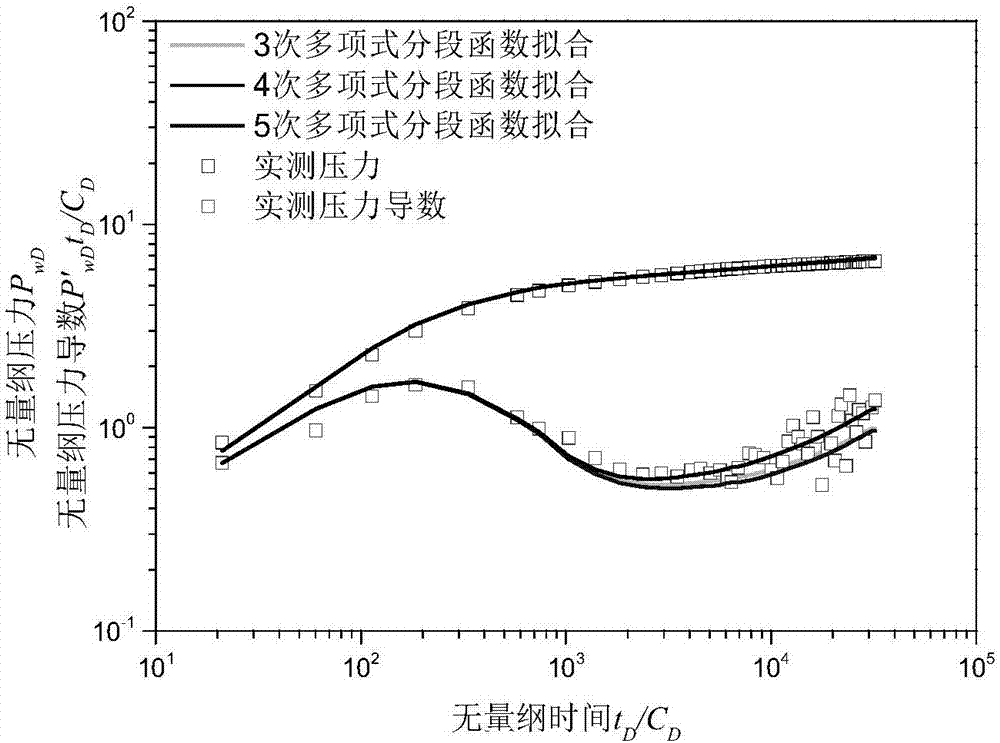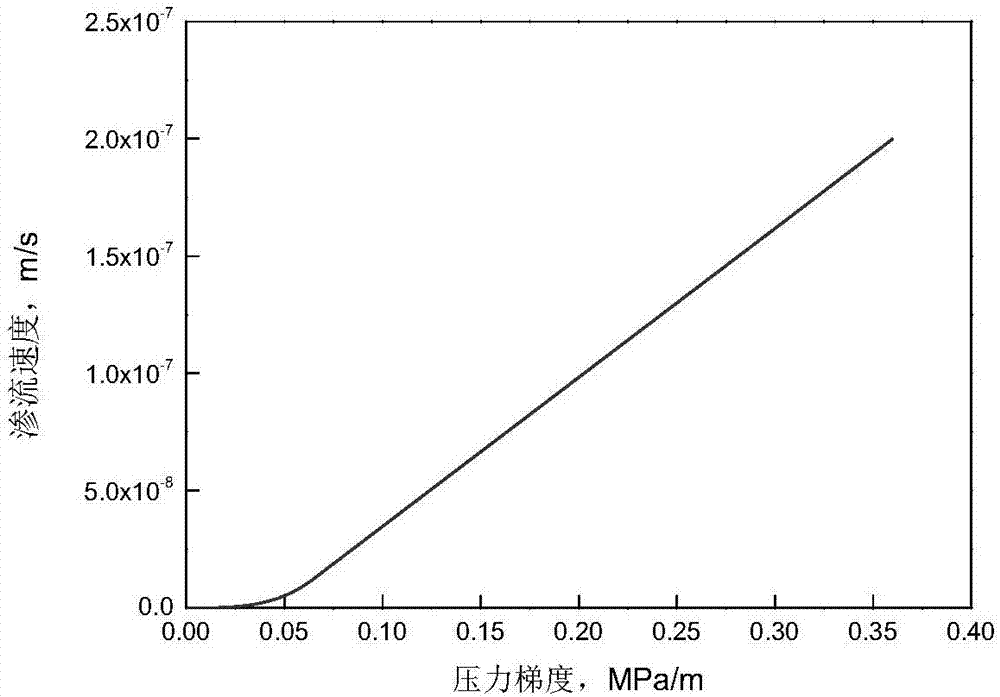Method for inverting low permeability reservoir non-darcy flow rule by utilizing pressure monitoring data
A low-permeability reservoir and pressure monitoring technology, applied in oil development reservoir engineering, inversion of low-permeability reservoir non-Darcy seepage law field, can solve the problem that it is difficult to truly obtain seepage law
- Summary
- Abstract
- Description
- Claims
- Application Information
AI Technical Summary
Problems solved by technology
Method used
Image
Examples
Embodiment 1
[0115] like figure 1 As shown, a method for inversion of non-Darcy flow law in low-permeability reservoirs using pressure monitoring data includes the following steps:
[0116] 101 Measure the change of the bottom hole pressure value of the oil well within a certain period of shut-in time, and obtain the relationship between the pressure difference and the shut-in time;
[0117] 102 preset the relationship between seepage velocity and pressure gradient and express it with a specific function;
[0118] 103. Determine the initial value of the parameters in the numerical solution model according to the logging, completion and microseismic data;
[0119] 104 Establishing a numerical solution model considering dynamic permeability, and calculating theoretical pressure values according to initial values of parameters;
[0120] 105 comparing the theoretical pressure with the measured pressure;
[0121] 106 judge whether both meet error requirement, if both meet error requireme...
Embodiment 2
[0175] like figure 1 As shown, a method for inversion of non-Darcy flow law in low-permeability reservoirs using pressure monitoring data includes the following steps:
[0176] 101 Measure the change of the bottom hole pressure value of the oil well within a certain period of shut-in time, and obtain the relationship between the pressure difference and the shut-in time;
[0177] 102 preset the relationship between seepage velocity and pressure gradient and express it with a specific function;
[0178] 103. Determine the initial value of the parameters in the numerical solution model according to the logging, completion and microseismic data;
[0179] 104 Establishing a numerical solution model considering dynamic permeability, and calculating theoretical pressure values according to initial values of parameters;
[0180] 105 comparing the theoretical pressure with the measured pressure;
[0181] 106 judge whether both meet error requirement, if both meet error requireme...
PUM
 Login to View More
Login to View More Abstract
Description
Claims
Application Information
 Login to View More
Login to View More - Generate Ideas
- Intellectual Property
- Life Sciences
- Materials
- Tech Scout
- Unparalleled Data Quality
- Higher Quality Content
- 60% Fewer Hallucinations
Browse by: Latest US Patents, China's latest patents, Technical Efficacy Thesaurus, Application Domain, Technology Topic, Popular Technical Reports.
© 2025 PatSnap. All rights reserved.Legal|Privacy policy|Modern Slavery Act Transparency Statement|Sitemap|About US| Contact US: help@patsnap.com



